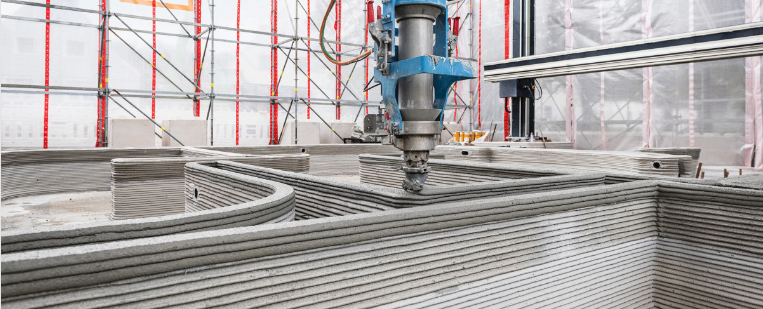The construction industry is on the brink of a revolution, and at the heart of this transformation lies 3D printing technology. While traditionally associated with manufacturing and prototyping, 3D printing has made significant strides in construction. This innovative approach to building promises to reduce costs, save time, and minimize waste. In this blog, we’ll explore the incredible potential of 3D printing in construction and the impact it is set to have on the industry.
What is 3D Printing in Construction?
3D printing in construction, also known as additive manufacturing, is a process that involves creating three-dimensional objects by depositing layers of material one on top of the other. Instead of traditional construction methods that often require assembling parts on-site, 3D printing allows for the creation of entire structures in a single, continuous process.
Benefits of 3D Printing in ConstructionPreview (opens in a new tab)
Speed and Efficiency:
One of the most significant advantages of 3D printing in construction is the speed at which buildings can be erected. The technology can significantly reduce construction time, enabling the completion of complex structures in a matter of days or weeks.
Cost Reduction:
3D printing can lower construction costs by minimizing material waste and labor expenses. Additionally, it can lead to a reduction in construction-related accidents due to the decreased need for human involvement in potentially hazardous tasks.
Design Flexibility:
With 3D printing, architects and engineers have unprecedented design freedom. Complex and unconventional shapes can be easily achieved, opening up new possibilities for creative and sustainable architecture.
Sustainability:
3D printing allows for precise material usage, reducing waste. Some construction 3D printers can even use recycled materials, contributing to a more sustainable and eco-friendly construction process.
Real-World 3D Printing Applications
The application of 3D printing in construction is already making waves:
Housing:
3D-printed houses are becoming a reality. Companies have successfully created single-family homes, affordable housing, and even multistory buildings using this technology. These projects offer a glimpse into the future of housing construction.
Bridges and Infrastructure:
3D printing is being used to create innovative bridges and other infrastructure elements. The technology allows for unique and highly durable designs that can withstand extreme conditions.
Emergency Shelters:
3D printing has the potential to revolutionize disaster relief efforts by quickly producing temporary shelters and medical facilities in affected areas.
Challenges and Future Prospects
While 3D printing in construction holds immense promise, it is not without its challenges. Regulatory and certification hurdles, material limitations, and the need for skilled operators are among the obstacles that must be overcome. However, as the technology matures and becomes more widely adopted, these challenges are expected to be addressed.
The future of 3D printing in construction is bright. As technology advances, we can expect to see larger and more complex structures created with greater precision and efficiency. Moreover, the potential for incorporating sustainable materials and automated processes will further enhance the technology’s appeal.
3D printing is poised to transform the construction industry. Its ability to save time, reduce costs, and enable innovative design opens the door to a new era of architecture and construction. As technology continues to evolve and overcome its current limitations, we can expect a world where buildings are not just constructed but printed, ushering in an era of faster, more efficient, and environmentally sustainable construction.



